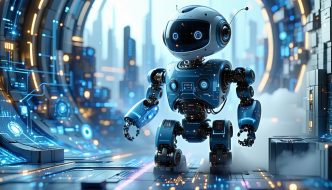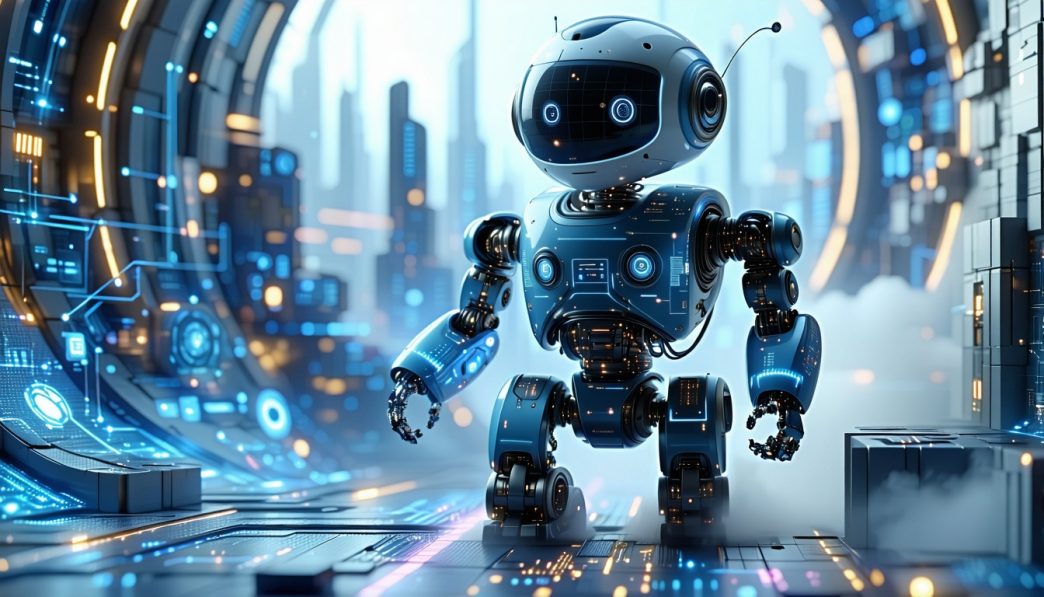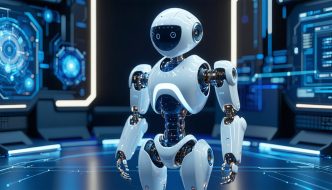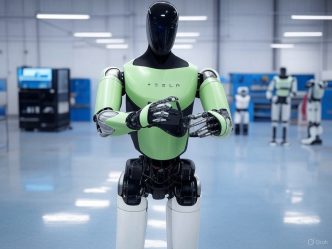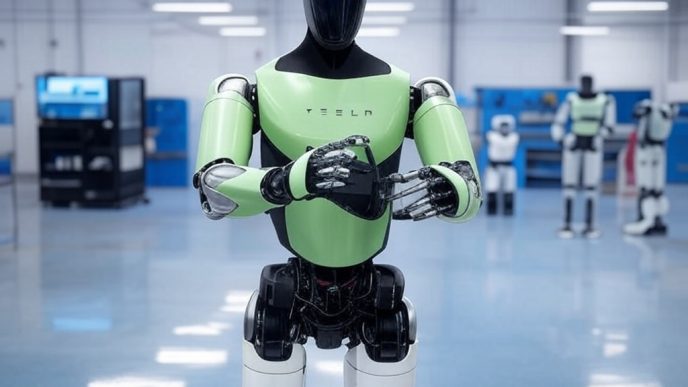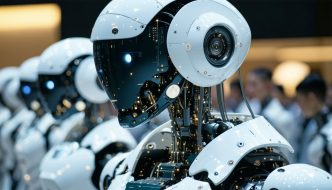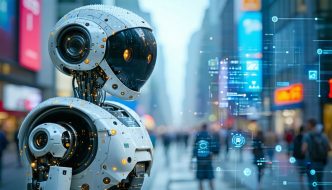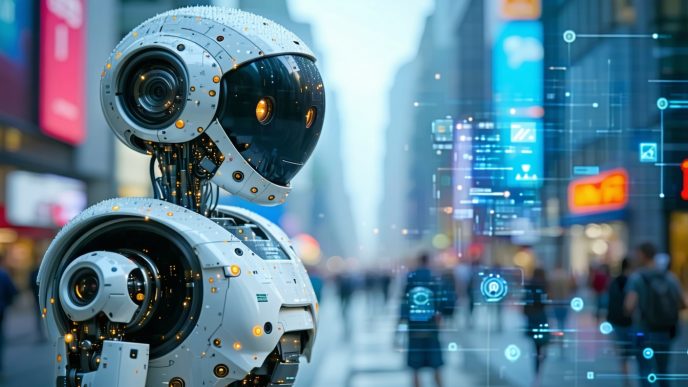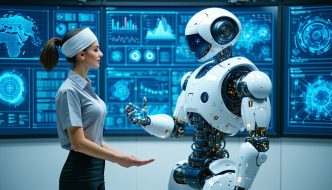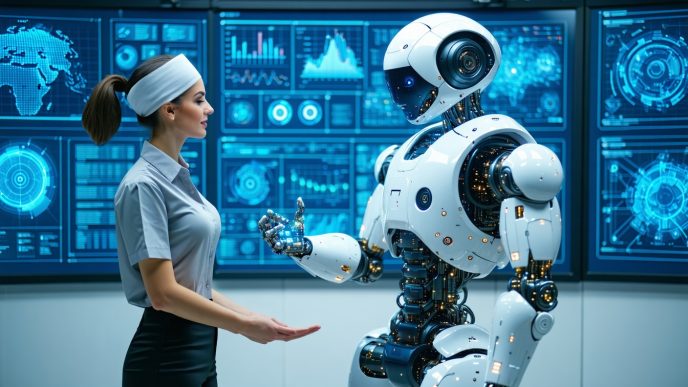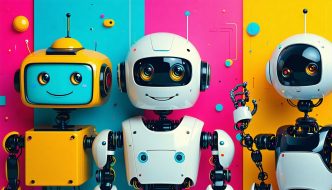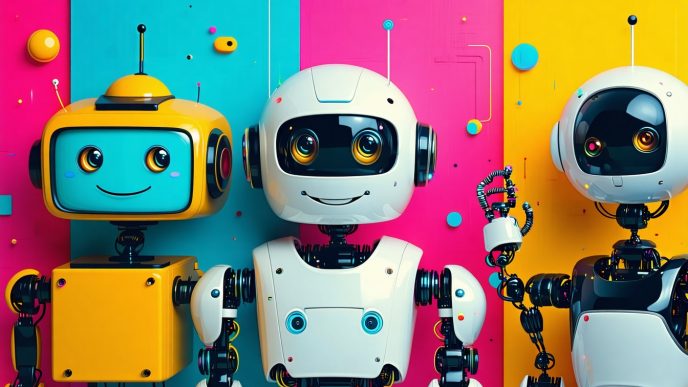Introduction to Humanoid Robots
Defining Humanoid Robots
Humanoid robots are designed to resemble human beings in both form and function. They are characterized by their bipedal locomotion, which allows them to walk, run, and navigate environments similarly to humans. Additionally, they often feature a head, torso, arms, and legs, enabling them to perform tasks that require human-like dexterity.
Key traits of humanoid robots include:
| Trait | Description |
|---|---|
| Structure | Human-like appearance with limbs and a head |
| Locomotion | Ability to walk and navigate independently |
| Interaction | Capable of engaging with humans and environments |
| Sensing Capabilities | Equipped with sensors for perception and interaction |
Humanoid robots vary in their complexity, ranging from simple robotic figures to advanced systems like the Unitree G1 robot that combine sophisticated AI and robotic functions.
Importance of Humanoid Robots
The significance of humanoid robots extends across various sectors, impacting technology, society, and daily life. Their design facilitates interaction in environments built for humans, making them invaluable in numerous applications.
Benefits of humanoid robots include:
| Benefit | Explanation |
|---|---|
| Accessibility | Provides assistance in environments designed for people |
| Versatility | Capable of performing a wide range of tasks |
| Human Interaction | Enhances social engagement and support |
| Innovative Research | Contributes to advancements in AI and robotics |
Applications of humanoid robots can be found in healthcare, education, and even home use. For example, robots can assist with elderly care, providing companionship and support. They are also increasingly utilized in research settings, where they help explore human-robot interactions. Insights garnered from these robots, including those like the Tesla Optimus robot and Sanctuary AI Phoenix, further the understanding and development of future technologies.
Humanoid robots, including various models such as Xiaomi CyberOne and Apptronik Apollo, are paving the way for innovative solutions to everyday challenges. Their ongoing development showcases the potential to revolutionize how people live and work in the future.
Unitree G1 Overview
Background of the Unitree G1
The Unitree G1 robot represents a new generation of affordable humanoid robots designed to offer real capabilities in a compact form. Developed by Unitree Robotics, the G1 aims to provide advanced robotics solutions that cater to various applications, ranging from educational use to interactive entertainment. Its design emphasizes both functionality and accessibility, ensuring that users can explore the potential of humanoid robotics without a prohibitive cost barrier.
The G1 is built with an emphasis on agility and adaptability, making it suitable for indoor and outdoor environments. As humanoid robots evolve, the Unitree G1 exemplifies how innovation can create versatile platforms for human-robot interaction.
Key Features of the Unitree G1
The Unitree G1 robot boasts several notable features that contribute to its effectiveness and appeal. Below is a summary of its key specifications:
| Feature | Description |
|---|---|
| Height | Approximately 1 meter (around 3.3 feet) |
| Weight | Roughly 15 kg (about 33 lbs) |
| Maximum Speed | Up to 3.5 km/h (approx. 2.2 mph) |
| Battery Life | Up to 2 hours on a full charge |
| Sensors | Equipped with LIDAR, ultrasonic, and IMU sensors |
| Communication | Wi-Fi and Bluetooth connectivity |
| Control Interface | Remote control via smartphone or tablet app |
The combination of these features allows the G1 to navigate various terrains with ease and interact with its surroundings effectively. Its sensors facilitate both sensing and perception capabilities, enabling the robot to recognize obstacles and adjust its path accordingly.
The versatility of the Unitree G1 also supports various applications in fields such as education, research, and entertainment. For instance, by understanding the functionalities of the G1, users can engage with the growing domain of humanoid robots for education or explore innovative solutions for humanoid robots in healthcare.
In observing these characteristics, it becomes clear how the Unitree G1 stands out in the competitive landscape of humanoid robotics.
Capabilities of the Unitree G1
The Unitree G1 showcases a variety of advanced capabilities, making it a noteworthy entry in the field of humanoid robotics. Its competencies span navigation and locomotion, manipulation and interaction, sensing and perception, along with communication and connectivity.
Navigation and Locomotion
The Unitree G1 is equipped with advanced navigation systems that enable it to move effectively in various environments.
| Feature | Description |
|---|---|
| Speed | Up to 3.5 km/h |
| Gait Adaptability | Can adjust walking patterns on different surfaces |
| Obstacle Detection | Utilizes sensors to navigate around obstacles |
| Stability | Maintains balance on uneven terrain |
This combination of features allows the G1 to traverse spaces with ease, making it suitable for both indoor and outdoor activities. For more details on humanoid robot locomotion systems, refer to our article on humanoid robot locomotion systems.
Manipulation and Interaction
The Unitree G1 is designed to interact with its surroundings effectively.
| Capability | Description |
|---|---|
| Gripping Mechanism | Equipped with robotic arms for object handling |
| Precision | Able to manipulate small objects with accuracy |
| User Interaction | Programmed for simple commands and responses |
These capabilities enhance its applicability in various settings, from industrial environments to educational demonstrations. If you want to know more about humanoid robots in education, check out our article on humanoid robots for education.
Sensing and Perception
The G1 integrates a range of sensors that equip it to gather data about its environment.
| Sensor Type | Function |
|---|---|
| Cameras | Provides real-time visual feedback |
| Proximity Sensors | Detects nearby objects and adjusts accordingly |
| Infrared Sensors | Facilitates navigation in low-light conditions |
These sensory systems allow the Unitree G1 to perceive and interpret its surroundings effectively. For those interested in the types of sensors used in humanoid robots, please visit our article on humanoid robot sensors.
Communication and Connectivity
The ability to communicate and connect is essential for humanoid robots.
| Feature | Description |
|---|---|
| Wi-Fi Connectivity | Enables remote control and data sharing |
| Voice Interface | Supports voice commands for user interaction |
| API Integration | Allows compatibility with other software and devices |
This connectivity paves the way for applications in various fields, enhancing its usability. For insights into voice interfaces used in humanoid robots, refer to our article on voice interfaces in humanoid robots.
The Unitree G1 exemplifies the evolving capabilities of humanoid robots, showcasing how technology can enhance mobility, interaction, and communication in diverse environments.
Applications of the Unitree G1
The Unitree G1 robot showcases its potential across various sectors, each benefiting from its advanced capabilities. This section will explore the significant applications in industrial use, research and development, and entertainment and education.
Industrial Use Cases
In the industrial sector, the Unitree G1 can enhance productivity and efficiency. The robot’s mobility and adaptability make it suitable for tasks ranging from assembly line work to quality control inspections. Its ability to navigate complex environments allows for seamless integration into existing workflows.
| Use Case | Description | Benefits |
|---|---|---|
| Assembly Line Support | Assists with the transportation of components | Increases speed and reduces labor costs |
| Inspection Tasks | Conducts quality checks for products | Ensures higher precision and reliability |
The use of the Unitree G1 in industries demonstrates its versatility in handling repetitive tasks while optimizing operational efficiency.
Research and Development
The Unitree G1 serves as a valuable tool in research and development environments. Its programmable interface allows researchers to experiment with robotics, AI, and interaction strategies. This adaptability fosters innovations in the design and functionality of humanoid robots.
| Application | Description | Outcomes |
|---|---|---|
| Robotics Research | Testing new algorithms and models | Accelerates development cycles |
| AI Integration | Implementing advanced AI systems | Enhances robot intelligence |
Through these applications, the Unitree G1 contributes to breakthroughs in robotics that may shape future designs and functionalities.
Entertainment and Education
The Unitree G1 also holds promise in the fields of entertainment and education. It can be utilized for interactive learning experiences and demonstrations, engaging students with hands-on robotics applications. In entertainment, the robot can perform choreographed routines or assist in performances, captivating audiences.
| Activity | Description | Audience Engagement |
|---|---|---|
| Educational Workshops | Provides practical robot programming sessions | Enhances student interest in STEM fields |
| Performances | Engages in dance or storytelling acts | Attracts diverse audiences |
In these contexts, the Unitree G1 enriches experiences, making learning and entertainment more immersive and interactive.
The diverse applications of the Unitree G1 robot highlight its utility across multiple sectors, offering solutions that enhance productivity, innovation, and engagement.
Advantages of the Unitree G1
The Unitree G1 robot offers several advantages that make it an appealing option in the realm of humanoid robots. Its cost-effectiveness, compact design, and versatility contribute to its position as a noteworthy choice for various applications.
Cost-Effectiveness
Affordability is a significant advantage of the Unitree G1. Compared to other humanoid robots on the market, the G1 presents a more economical option without compromising on essential features and capabilities. This cost efficiency makes it more accessible to research institutions, educational settings, and hobbyists interested in robotics.
| Feature | Average Cost Comparison |
|---|---|
| Unitree G1 | $3,000 |
| Competitor A | $5,000 |
| Competitor B | $8,000 |
The pricing makes the Unitree G1 suitable for those who wish to explore humanoid robotics without incurring substantial financial investment.
Compact Design
The compact design of the Unitree G1 sets it apart from larger humanoid robots. It possesses a smaller footprint, which allows for easier maneuverability in confined spaces. This size efficiency enables the robot to operate effectively in various environments, from homes to laboratories.
| Dimension | Measurement |
|---|---|
| Height | 48 cm |
| Width | 30 cm |
| Depth | 25 cm |
This design is particularly advantageous for educational purposes or domestic use where space might be limited. The Unitree G1 can navigate around obstacles without difficulty and be integrated more seamlessly into different settings.
Versatility and Customizability
The Unitree G1 is designed to be versatile and customizable, accommodating a range of functions tailored to user preferences. It can be programmed for various tasks, such as simple human interactions or complex problem-solving scenarios. This flexibility makes it applicable in several fields, including education, research, and even entertainment.
Users can integrate additional modules or software to expand the robot’s capabilities, making it a valuable tool for those interested in robotics.
| Customization Options | Examples |
|---|---|
| Software Algorithms | Pathfinding, object recognition |
| Sensor Integration | Cameras, ultrasonic sensors |
| Physical Add-ons | Grippers, additional mobility attachments |
These customization options enable users to tailor the Unitree G1 to meet specific requirements, enhancing its utility across different applications, such as those found in humanoid robots for home use or humanoid robots in education.
Overall, the Unitree G1 stands out in the humanoid robot market due to its affordability, compact form, and adaptability, making it a practical choice for various users and industries.
Limitations of the Unitree G1
While the Unitree G1 robot showcases impressive features and capabilities, it is important to acknowledge its limitations. These challenges may affect its overall performance and usability.
Performance Constraints
The Unitree G1 robot is designed for various applications; however, its performance is influenced by several factors. These include:
| Factor | Limitation |
|---|---|
| Speed | Limited to moderate speeds, which may not suffice for all dynamic tasks. |
| Load Capacity | Restricted load capacity, affecting manipulation of heavier objects. |
| Battery Life | Relatively short operational time before requiring a recharge. |
These constraints may limit its ability to perform in environments or tasks intended for more advanced or powerful robots.
Technical Challenges
The development and operation of the Unitree G1 involve several technical challenges that impact its versatility and functionality. Some of these challenges include:
| Challenge | Description |
|---|---|
| Navigation | Complexity in navigating unpredictable terrains may hinder performance. |
| Sensing Accuracy | Limitations in sensor technology can affect perception and decision-making capabilities. |
| Connectivity | Dependency on wireless networks can lead to disruptions in communication and control. |
These technical hurdles may require ongoing development efforts to enhance the robot’s capabilities in practical environments.
Potential Improvements
To maximize the effectiveness of the Unitree G1 robot, several areas may be targeted for improvements. These potential enhancements include:
| Improvement Area | Potential Benefit |
|---|---|
| Increased Battery Capacity | Extending operational time would allow for more extensive tasks. |
| Advanced Sensory Systems | Enhancing sensors can improve the robot’s interaction and environmental awareness. |
| Enhanced Load Capacity | Improving the design to handle heavier loads can expand its range of applications. |
Focusing on these improvements can significantly enhance the effectiveness and usability of the Unitree G1, broadening its scope and potential in various fields, such as humanoid robots for home use and humanoid robots in healthcare.
Future of Humanoid Robots
Emerging Trends
The field of humanoid robotics is rapidly advancing, with several emerging trends shaping the future of these technologies. One significant trend is the integration of artificial intelligence (AI), which enhances emotional recognition capabilities and allows for better interaction between robots and humans. This advancement is particularly vital for applications in areas like elder care, where social interaction can significantly improve the quality of life.
Another trend is the growth of humanoid robots designed for various industries, including healthcare, logistics, and education. Organizations are investing in humanoid robots for healthcare and education as they can fulfill roles ranging from patient assistance to tutoring. This diversification opens new possibilities for their deployment and functionality.
The demand for customization is also increasing. Developers are creating humanoid robot customization options to cater to specific user needs. This includes tweaking the robots’ software, interfaces, and even physical attributes to enhance user experience.
| Trend | Description |
|---|---|
| AI Integration | Improved interaction capabilities and emotional intelligence. |
| Industry-Specific Designs | Customized robots for healthcare, logistics, education, etc. |
| Customization Options | Tailoring robots to meet users’ specific needs. |
The Role of Humanoid Robots in Society
Humanoid robots are set to play an increasingly significant role in society. Their applications are expected to expand beyond simple tasks, influencing many facets of daily life. For instance, robots are becoming popular in smart homes, performing daily chores such as cleaning and organizing. They will also serve as companions, addressing loneliness and providing social interaction, particularly among the elderly population.
Moreover, as technology advances, humanoid robots will likely assist in public safety, managing security tasks in various settings. Their ability to navigate and understand their environment makes them well-suited for these roles.
Another potential influence lies in education. Robots could transform conventional teaching methods through interactive, hands-on experiences, thereby engaging students more effectively. The potential for robot emotions and ethics will emphasize the importance of ethical considerations in programming these robots to ensure they interact positively with humans.
As the integration of humanoid robots deepens in various fields, societal acceptance and understanding will play a critical role in their development and deployment. Engaging with the public about the capabilities and ethical implications of humanoid robots will be essential for fostering a collaborative future. Understanding these dynamics will be crucial as society navigates this evolving landscape.
